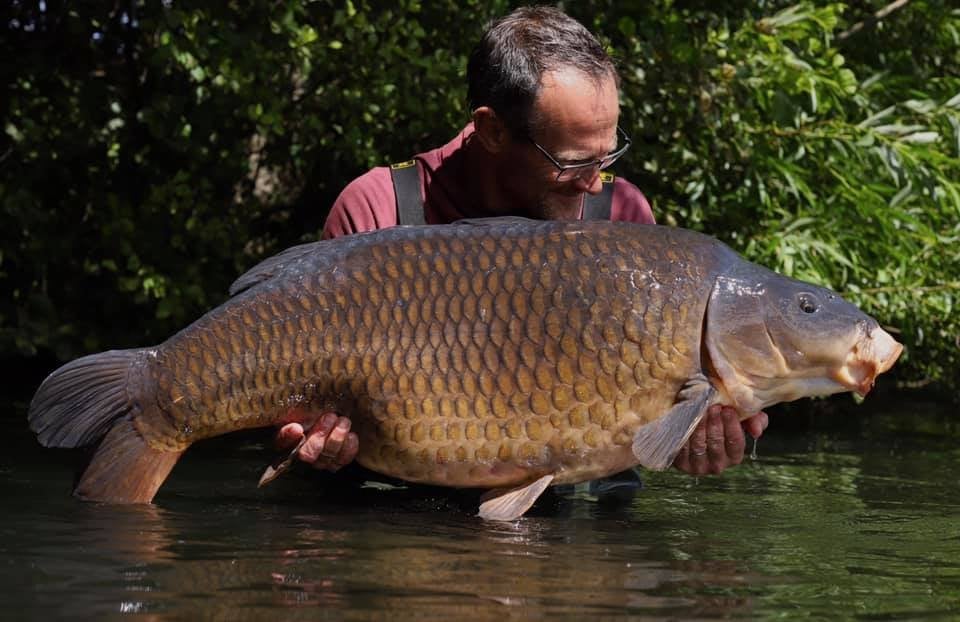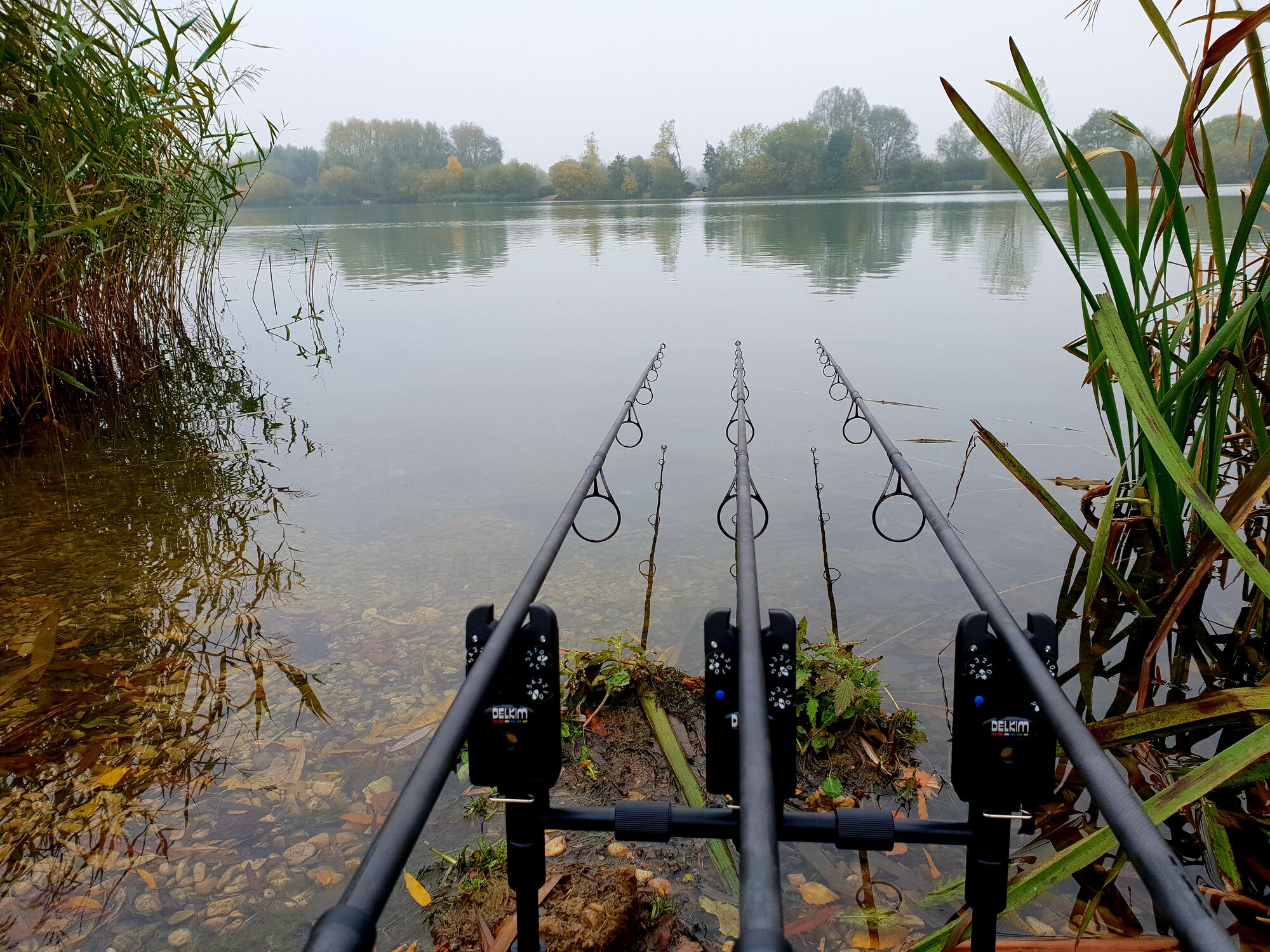Types of Fishing Knots: A Beginners Guide
- By Andy Grenfell
- |
- 6 March 2025

Mastering the art of tying fishing knots is an essential skill for any angler, but how can you determine which knots are the best and how to tie them effectively? In this beginners guide, we'll introduce you to 5 most commonly used fishing knots and how to tie them.
Table of Contents
Uni Knot
The Uni Knot is a strong and reliable knot used for attaching your fishing line to hooks, swivels, or lures. It’s simple to tie and works well with both monofilament and braided lines.
Thread the Line
- Pass the end of your fishing line through the eye of the hook, swivel, or lure.
- Pull through about 15cm - 20cm of line to work with.
Form a Loop
- Take the tag end and double it back towards the mainline.
- Form a loop by laying the tag end over the mainline.
Wrap the Line
- Take the tag end and wrap it around both the standing line and inside the loop.
- Do this 5 - 7 times for monofilament or 7 - 10 times for braided line.
Tighten the Knot
- Pull the tag end gently to start tightening the wraps.
- Pull the mainline to slide the knot down towards the hook eye.
Secure & Trim
- Moisten the knot with a little saliva or water to reduce friction.
- Pull the standing line and tag end firmly to fully tighten the knot.
- Trim the tag end, leaving about 3mm - 5mm for security.
Your Uni Knot is now secure and ready to use!
Statistics
- Strength: High. It holds well, even under heavy pressure.
- Ease of Tying: Very easy. Great for beginners.
- When to Use: If you need a strong, quick knot for general fishing.
- Verdict: If you only learn one knot, make it the Uni Knot. It’s reliable, strong, and works in almost every fishing situation.
Blood Knot
The Blood Knot is a strong and streamlined knot used to join 2 fishing lines together. It’s ideal for connecting lines of similar diameter, such as monofilament or fluorocarbon leaders.
Overlap the Line
- Take the two pieces of line that you want to join and overlap them by about 15cm - 20cm.
- Hold them together so they cross over.
Wrap the First Line
- Take the tag end of one line and wrap it around the other line 5 - 7 times.
- Pass the tag end through the gap between the two lines in the centre.
Wrap the Second Line
- Take the tag end of the second line and wrap it around the first line 5 - 7 times in the opposite direction.
- Pass this tag end through the same centre gap but in the opposite direction to the first tag end.
Tighten the Knot
- Moisten the knot with saliva or water to reduce friction.
- Slowly pull both pieces of mainline at the same time.
- The wraps will slide together and form a neat, compact knot.
Trim Excess Line
- Trim the tag end, leaving about 3mm - 5mm for security.
Your Blood Knot is now secure and ready to use!
Statistics
- Strength: Very strong. Especially with similar diameter lines.
- Ease of Tying: Medium. Takes a bit of practice but is worth learning.
- When to Use: When you need to join two lines securely without a bulky knot.
- Verdict: If you need to tie a leader to your main line, the Blood Knot is one of the best options.
Half Blood Knot
The half Blood Knot is a simple and reliable knot used to attach your fishing line to a hook, swivel, or lure. It’s easy to tie and works well with monofilament and fluorocarbon lines.
Thread the Line
- Pass the tag end of your fishing line through the eye of the hook, swivel, or lure.
- Pull through about 15cm - 20cm of line to work with.
Wrap the Line
- Take the tag end and wrap it around the mainline 5 - 7 times.
- Make sure the wraps are neat and don’t overlap.
Pass Through the Loop
- After the last wrap, take the tag end and pass it through the small loop just above the eye of the hook.
Tighten the Knot
- Moisten the knot with a little saliva or water to reduce friction.
- Pull the standing line to tighten the wraps around the hook eye.
- Gently pull the tag end to secure everything in place.
Trim the Excess
- Trim the tag end, leaving about 3mm - 5mm for security.
Your Half Blood Knot is now secure and ready to use!
Statistics
- Strength: Medium. Fine for small fish, but can slip under heavy strain.
- Ease of Tying: Very easy. Not not the best option for big fish.
- When to Use: When speed is more important than absolute strength.
- Verdict: A decent knot, but there are stronger alternatives. A Uni Knot or a Palomar Knot is a better choice for tying hooks.
Palomar Knot
The Palomar Knot is one of the strongest and easiest knots to tie. It works well with monofilament, fluorocarbon, and braided lines, making it a favourite among anglers for securing hooks, swivels, and lures.
Double the Line
- Take about 15cm - 20cm of your fishing line and double it back to form a loop.
- Pass the loop through the eye of the hook, swivel, or lure.
Tie an Overhand Knot
- With the loop and mainline together, tie a simple overhand knot like the first step of tying your shoelaces.
- Do not tighten it fully yet, make sure the hook or lure is hanging loosely inside the loop.
Pass the Hook Through the Loop
- Take the looped end and pass it over the entire hook, swivel, or lure.
- Ensure the loop slides all the way over and below the hook.
Tighten the Knot
- Moisten the knot with a little saliva or water to reduce friction.
- Pull both ends of the line to tighten the knot evenly.
- The knot should cinch down neatly against the hook eye.
Trim Excess Line
- Trim the tag end, leaving about 3mm - 5mm for security.
Your Palomar Knot is now secure and ready to use!
Statistics
- Strength: Extremely strong. One of the best for all line types.
- Ease of Tying: Very easy. Only takes a few seconds.
- When to Use: If you want a super strong, no-fail knot for hooks, lures, or swivels.
- Verdict: One of the best knots you can use. If you’re using braid, definitely go for the Palomar Knot.
Figure of 8 Loop Knot
The figure of 8 Loop Knot is a strong and simple knot used to create a secure loop in your fishing line. It’s commonly used for attaching rigs, leaders, or droppers and maintains excellent strength in the line.
Form a Loop
- Take the end of your fishing line and fold it back on itself to create a loop of your desired size.
Make a Figure of 8 Shape
- Take the loop end and twist it once to form a small loop.
- Pass the loop end back through this small loop, creating a shape that looks like the number 8.
Tighten the Knot
- Gently pull both the mainline and the loop end to start tightening the knot.
- Moisten the knot with a little saliva or water to reduce friction.
- Continue pulling until the knot tightens neatly.
Secure & Trim
- Ensure the loop remains the desired size and is firmly in place.
- Trim the tag end, leaving about 3mm - 5mm for security.
Your Figure of 8 Loop Knot is now secure and ready to use!
Statistics
- Strength: High. Keeps good strength in the line.
- Ease of Tying: Very easy. Only a few simple steps.
- When to Use: When you need a strong loop in your fishing rig.
- Verdict: Not used for tying hooks, but brilliant for making secure loops in rigs.
Our Conclusion
Now that we’ve looked at all five knots, here’s the final verdict:
- Best Overall Knot: Uni Knot. It’s strong, easy to tie, and works for nearly everything.
- Best for Maximum Strength: Palomar Knot. It holds almost 100% of the line strength.
- Best for Joining 2 Pieces of Line: Blood Knot. It's slim and super strong for leader connections.
If you’re a beginner, start by learning the Uni Knot. Once you’re comfortable with that, try the Palomar Knot for extra strength and the Blood Knot for leader connections.











